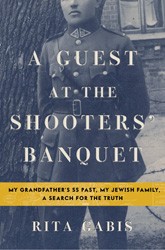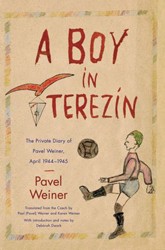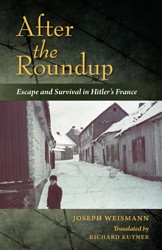There are few books of Holocaust testimony that include pictures of families who lived through those times. This book is valuable as it contains family photographs dating from before 1939 and up until 1997. The photographs have been collected by Ignas and Hala Krakowiak’s daughter, Joan. In 1997, Joan’s mother agreed to catalog some of her experiences and share them with generations-to-come and begins to share her life in both words and pictures.
The reader learns about the Polish Jewish couple’s wedding in 1935, and then sees them encounter the laws the Nazis began to instate regarding Jewish life in Europe. The couple moved to Belgium in an attempt to improve their situation, but the Nazi laws prevented them from starting a business there. Soon after, a daughter, Yvonne, was born. After Poland was occupied, Ignas and Hala realized that they had to escape to France.
But France did not remain safe either. The only way to leave the country was to acquire a visa to Portugal. This was illegal, but Aristides de Sousa Mendes, the Portuguese Consul General, ignored the law and allowed thousands to flee to safety, including the Krakowiaks. (Later, Aristides de Sousa Mendes was punished by the Portuguese government and died penniless.)
Portugal could not be a permanent home, so the family was sent to Jamaica. There, to their shock, they were confined to a camp with a 10:00 PM curfew, and where the ability to find work was limited. However, Ignas bought a bike for transportation and took Yvonne with him everywhere he went. Then tragedy struck: Yvonne was injured in a bicycle accident, sepsis set in, and she died. The impact on Hala was devastating.
By 1943, they had applied for acceptance to the United States and were accepted for entry. The remainder of the book shows the reader how they managed to adapt to American life.
In addition to the text and the photographs, there are letters from the 1942 Jamaican camp where children who knew Yvonne express their shock and loss after her death as well as letters from family in the Polish ghetto.
This collection of family memorabilia, letters, postcards, family trees, and Nazi signage gives a comprehensive look at what Jewish families in Europe went through during the Nazi era and beyond. A useful resource for the education of today’s youth, this book is recommended for ages 12 to 16.





